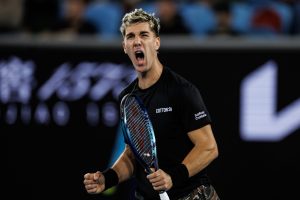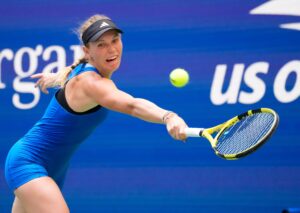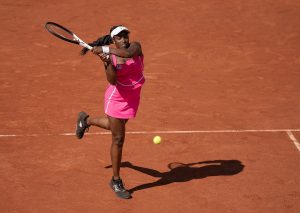In a four-part series to end the 2019 season, Martin Keady, our resident tennis historian, looks back not just at the last year but at the last decade in tennis. This week, he continues to examine the downsides of the last decade.
- The Major Failure of an Entire Generation of Male Players (Marin Cilic excepted)
In time, indeed perhaps even pretty soon, they will come to be known as tennis’s “lost generation” – that group of male players, now aged roughly between 25 and 30, who, with the honourable exception of Marin Cilic, failed to challenge The Big Three at the Majors, leaving Novak, Rafa and Roger to continue winning Majors in the 2010s while their own careers effectively hit a brick wall.
Among the most prominent players in this generation are Kei Nishikori, Milos Raonic and Grigor Dimitrov, all of whom have had successful careers and even apparent “breakthroughs”, with Nishikori and Raonic reaching Major Finals (the 2014 US Open Final and the 2016 Wimbledon Final respectively) and Dimitrov winning the ATP Tour Finals in 2017. However, they have all failed to push on from those career highlights, instead slipping back somewhat (indeed, rather spectacularly in Dimitrov’s case for most of 2019) to the point that they can no longer be realistically considered as Major contenders.
Of course, that is largely due to the sheer longevity of The Big Three, who, even as the sport enters the 2020s, continue to remain some distance ahead of the other top men. The likelihood now is that it will not be the generation immediately behind them – Nishikori, Raonic et al – who will finally dislodge Novak, Rafa and Roger from the top of the game but the generation after that, namely the much younger but seemingly much more robust “NextGen” players (for want of a better term), such as Stefanos Tsitsipas, Daniil Medvedev and, in time, perhaps even Jannik Sinner. If that does come to pass, then tennis’s “lost generation” of men will ultimately become the sport’s “forgotten generation”.
- The Death of the Davis Cup
Its demise has long been predicted, but perhaps the obituary was finally delivered by Pierre-Hugues Herbert’s father in Madrid in 2019, when he lamented, “The Davis Cup is dead”. Given everything that happened at the first showing of the new Davis Cup – which is played in just one week, rather than over the course of a whole year – it was hard to argue with him, because so many of the best aspects of the old Davis Cup format have apparently now gone forever.
They certainly did not all play simultaneously (far from it), but the very fact that The Big Three of Djokovic, Nadal and Federer all played in, and won, the Davis Cup in the last decade under its old format was surely proof that there was some life left in the old competition. Even the three greatest male players of all time wanted to experience for themselves the uniquely partisan atmosphere of Davis Cup matches, as well as extending themselves on court in the traditional gruelling five-set format for both singles and doubles, which had been the format that the previous greats of the game, from Lacoste to Laver, had proved themselves in. And the fact that Federer, for one, chose to play exhibition matches in South America rather than participate in the new Davis Cup surely said it all about his own distaste for the new format.
As I have argued elsewhere, the new format of the Davis Cup is hopefully just a halfway house en route to what should be the ultimate aim of tennis’s administrators, at least as far as team events are concerned, namely the creation of a genuine Tennis World Cup. Such a World Cup would be played only once every four years, and crucially at a time of year (such as the autumn, after the US Open) that gives it the spotlight that it deserves. However, until such a genuinely great global tournament is created, it appears that the Davis Cup will continue in its present vein. The problem is that if Spain continue to win the Davis Cup in their home country for the next three or four years in succession, the entire concept of international team tennis could be completely devalued and the idea of a true Tennis World Cup might never come to fruition.
- The Stabbing of Petra Kvitova
On 20 December 2016, just five days before Christmas, Petra Kvitova was surely in a pretty good place in her tennis career. Although she had not added recently to her two Wimbledon wins in 2011 and 2014, which had announced her as probably the finest Czech “lefty” since Martina Navratilova, she had just been part of her country’s successful Fed Cup team. Barely a month earlier, the Czech women had completed a hat-trick of victories in the premier women’s team tennis event, to establish themselves, alongside the legendary Australians and Americans of the 1960s and 1970s, as one of the greatest teams in the history of the competition. But then everything changed for Kvitova when she confronted a burglar at her apartment in the small Czech town of Prostějov, was stabbed in her left hand and then had to recover from potentially career-ending injuries.
To date, nearly three years on, Kvitova has yet to complete her comeback from injury, and arguably she will only do so when she wins another Major. She came close in 2019, reaching the Australian Open Final but losing to Naomi Osaka in three sets. That was an enormous achievement, given all the physical and emotional damage caused by the attack that she had suffered. Nevertheless, if she is ever to emulate Monica Seles, who recovered from being stabbed on court by a Steffi Graf fanatic to win the 1996 Australian Open, Kvitova will have to go one step further, and in the age of Osaka, Andreescu et al that is by no means certain. If, as is becoming increasingly likely, she never wins another Major, then that will be a minor tragedy for her and for tennis itself, which, as with Seles, will see another brilliant young woman’s career permanently blighted by the actions of an obviously troubled individual.
- Match-fixing
The name of Karim Hossam is almost certainly not known to most tennis fans, but it should be, as he is arguably the highest-profile figure to be banned from tennis for match-fixing, which, as for most professional sports, continues to be the bane of the game. Hossam was a hugely talented young Egyptian who dreamed of translating Egypt’s great tradition in another racket sport – squash, in which Ramy “The Artist” Ashour was just one of a host of famous Egyptian players – into tennis. That was until 2018, when he was found guilty of a number of match-fixing offences between 2013 and 2017, and promptly banned from tennis for life.
There were numerous match-fixing cases in tennis in the 2010s, invariably at the lower ends of the game, such as the Challenger and Future tour events, where the lower-ranked players in the world, including former child stars such as Hossam, largely ply their living. The belief persists that it is only at those levels of tennis that match-fixing really persists, and that it is largely absent from the highest echelons of the game, namely the ATP Tour and the Majors, simply because the financial rewards on offer at that level of the game far exceed anything that could be gained by working with illicit bookmakers and other criminals.
The fear is that such a view will one day be proved to be dangerously naïve, as a player at one of those top events – not one in the world’s top 50 perhaps, but one just outside the top 100, who is struggling to support himself on his relatively meagre winnings – is exposed for match-fixing, either at the event itself or at a smaller event in the run-up to it. If that happens, then the absence in tennis of a single, unified governing body, of the kind found in virtually every other professional sport, could be cited as one of the main reasons that such high-profile match-fixing has been allowed to happen in the first place.
- Maria Sharapova’s Drugs Ban
Unfortunately, probably the single biggest story in tennis in the 2010s was the fall from grace of one of the sport’s biggest stars, career Grand Slam-winner and for many people the face of women’s tennis, Maria Sharapova. Early in 2016, Sharapova announced that she had failed a drugs test at that year’s Australian Open for meldonium, which she had supposedly been taking for many years for a minor heart problem but which had been added to the WTA’s banned list of substances from 1 January 2016. Sharapova was promptly banned for two years, which was later reduced to 15 months on appeal.
Sharapova duly returned to the sport in 2017 and has continued to play ever since, but her current world ranking (outside the world’s top 100) is a testament to the fact that she has never really recovered from her drugs ban. Certainly, her public image, both within tennis and outside it, has never recovered, with a number of other high-profile female players, notably Canada’s Eugenie Bouchard, publicly calling her a “cheat”. The net result has been that, nearly four years on from her initial ban, Sharapova must surely be considering retirement, rather than continuing to play on at a vastly reduced level for the rest of her career.
In one sense, of course, it was a good thing that Sharapova’s drug-taking was exposed, and it has been even better that she has not been able to recover her former glory. However, the real problem is that that “former glory” (including her five Majors) has itself been called into question, because she won the bulk of those Majors while taking meldonium. Certainly, when one thinks of the wondrously fresh-faced and excited 17-year-old who won Wimbledon in 2004 and promptly phoned her mother in Russia (her mother having been unable to follow her and her father to Florida to pursue her tennis dream), it is hard to think of the subsequent Sharapova story as anything but tragic, even if it is largely a self-inflicted tragedy. Sharapova may still have most of her millions, but her sporting tragedy is that in the future she will surely be forever associated with the likes of Ben Johnson and Hansie Cronje as one of sport’s worst cheats, rather than being thought of as one of the finest female tennis players ever.
Next time: 10 Things To Look Forward To In Tennis In the 2020s.
Main Photo:






